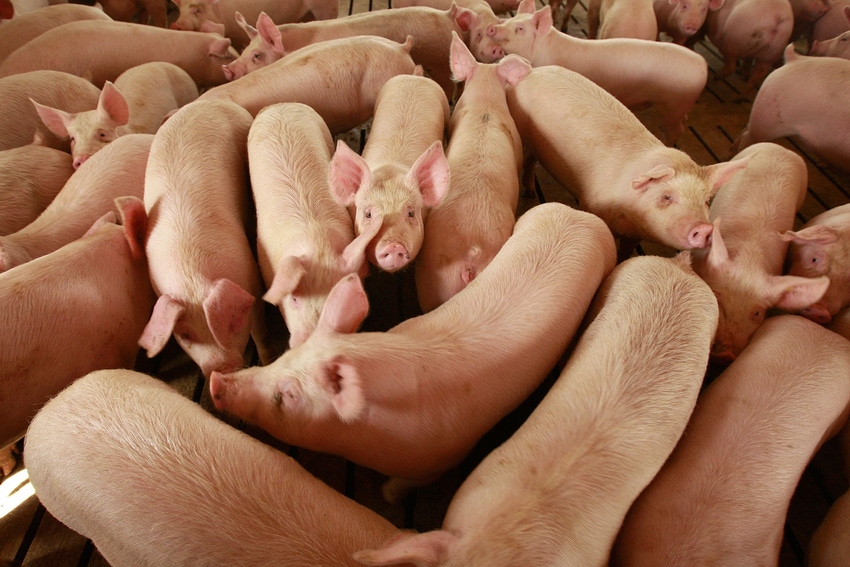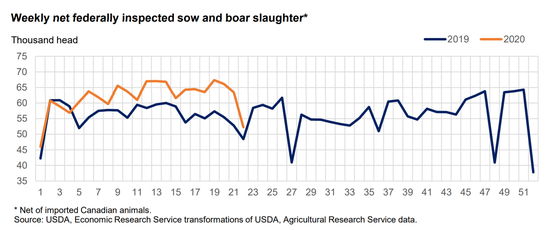Sow, boar slaughter largely exceeding year-ago levels
Lower to negative producer returns as well as processing plant challenges contribute to increased slaughter.

Sow and boar slaughter in 2020 has largely exceeded year-ago slaughter numbers since the beginning of the year, according to the U.S. Department of Agriculture’s latest “Livestock, Dairy & Poultry Outlook."
“Changes in sow and boar slaughter are often indicators of future directions in pork production, particularly when slaughter increases,” USDA economist Mildred Haley explained. “Extended increases in sow and boar slaughter signal decreases in the pork production base and can indicate future decreases in pork production.”
According to USDA, sow and boar slaughter in the first 22 weeks of 2020 (between the week ending Jan. 4 and the week ending May 30) has averaged almost 62,000 head per week, up more than 10% versus the same period a year ago.
Since the week ending April 11, when COVID-19-induced interruptions in the processing sector began to occur, sow and boar slaughter has accelerated even faster. Between the week ending April 11 (week 15) and May 30 (week 22), slaughter of breeding animals averaged about 63,000 head per week, almost 15% above the 54,800-head average for the same period in 2019.

“The factors driving increased breeding animal slaughter include low to negative producer returns,” Haley said.
In fact, Iowa State University’s estimated returns for farrow-to-finish operations in Iowa show negative producer returns for the six-month period beginning in November 2019.
Haley said extreme industry disruptions caused by the processing facility challenges during COVID-19 have likely driven returns lower and brought uncertainty to the production outlook.
Prices of live equivalent 51-52% lean hogs in May averaged $46.52/cwt, 22% below May 2019. USDA will publish its quarterly “Hogs & Pigs” report on June 25, which will provide June 1 breeding inventory numbers as well as producer intentions for summer and fall farrowings. Both are indicators of where pork production may be headed for the balance of 2020 and into 2021.
About the Author(s)
You May Also Like





